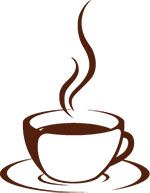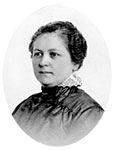October 09, 2018
Coffee and the Sales Professional
The ultimate motivational crutch is an instant pick-me-up in a cup.
Movie fans and sales experts alike are quite familiar with the movie Glengarry Glen Ross, which follows four struggling real estate salespeople who are pitted against each other. In its most famous scene, a corporate fixer (Alec Baldwin, jet black hair and all kinds of intense) is sent in to motivate the team. The seven minutes that follow is an epic monologue of expletives and bone-cutting “motivational” bromides that today would likely merit a chorus of outraged complaints and an immediate intervention by HR. Baldwin’s most famous line? “Put that coffee down,” he orders, as the camera cuts to one of the salespeople standing at the coffee pot and pouring himself a cup. “Coffee’s for closers only.”

The line, endlessly quotable, mines one of the most pervasive tenets of working in sales: the necessity of chemical assistance. The Mad Men set certainly enjoyed their two-martini lunches, and the “Wolves” of Wall Street gravitated toward the harder white stuff. But from Styrofoam to Starbucks and Folgers to Fair Trade, there’s been one consistent companion for the evolving sales pro: coffee. Or, to be more specific, caffeine.
The association pervades with cause. Coffee instantly brings to mind the grind (in every sense of the word). It’s there whenever the salesperson needs it: hunkering down at the office; on the road before the next meeting; the informal conversation starter that eventually leads to the deal.
The numbers back it up. Roughly 83% of Americans drink coffee, and almost two-thirds of our country drinks it every day, according to the National Coffee Association – the highest figure in six years. Even in our fanatical, health-conscious ways, we just can’t seem to kick our java jones.
Nor can the medical community even make up its mind about it. Does coffee reduce Alzheimer’s and cancer risks and boost creativity? Or is it addictive and detrimental to heart health and cholesterol?
No matter the division, there are plenty of distributors who worship the almighty bean. “I have one cappuccino per day made at home with a Nespresso double espresso shot and Barista almond milk in the frother,” says Cindy Jorgenson of BDA. “Can’t. Live. Without.”
Of course, not everyone in sales is hopelessly devoted. (“I drink zero cups of coffee,” says Scott Hulbert of ideavation, who’s a reformed serial Diet Coke drinker.) But that’s beside the point. To this day, a steaming cup is emblematic of the sales professional who gets the job done. Baldwin had it right: Coffee is for closers.
A History of Coffee
800
On the Ethiopian plateau, a goat herder notices that his charges act particularly energetic after eating coffee berries. A local abbot makes a dark drink using the berries, and it has the same effect on him. Word of these berries with energizing properties moves east.
1000-1500s
Coffee trade spreads on the Arabian Peninsula. By the 15th century, coffee plants are being grown in the Yemeni district of Arabia. By the 16th, its benefits are known in Persia, Egypt, Syria and Turkey. Public coffeehouses, called qahveh khaneh, start cropping up.
1600s
Coffee makes its way across Europe, and coffeehouses open up in cities in England, Austria, France, Germany and Holland.
Mid-1600s

Coffee is brought to New Amsterdam (modern-day New York City) by the British and soon replaces beer as the city’s favorite breakfast beverage.
1793
New York City’s first coffee wholesaler opens, selling beans to taverns and hotels.Late
1800s
Coffee quality improves with advancements in the roasting, packaging and shipping process.
Late 1800s
Coffee quality improves with advancements in the roasting, packaging and shipping process.
1905
The first espresso machine is manufactured in Italy.
1908

German Melitta Bentz invents the first coffee filter out of blotting paper.
1938
Sunbeam introduces its first Coffeemaster electric coffeepot for home brewing.
1945

Maxwell House Instant Coffee, which had been popular for service members during WWII, hits grocery stores.
1950s
Low-quality beans come onto the market as companies cut costs and try to train drinkers to get used to an inferior product, positioning it as functional rather than enjoyable.
1970s
Mr. Coffee becomes the first in-home automatic drip brewer.
1971
The first Starbucks opens in Seattle.
2018

Starbucks now has thousands of locations worldwide, and coffee is the second most-sought commodity in the world after crude oil.